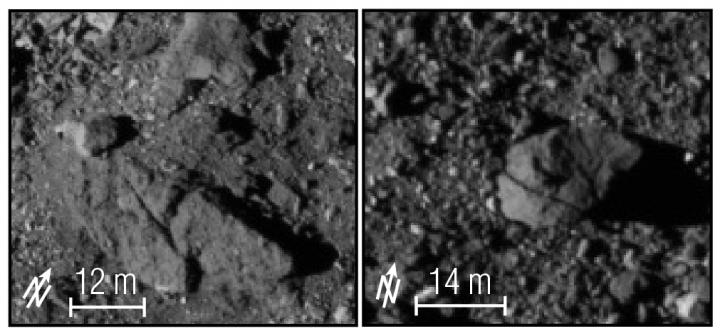
Using data from NASA’s OSIRIS-REx mission, an SwRI-led team discovered that the surface of near-Earth asteroid Bennu is geologically older than expected. Craters and large, often fractured boulders (shown here) likely date from the time the asteroid was still orbiting in the main asteroid belt between Mars and Jupiter. Credit: NASA/GSFC/University of Arizona
A Southwest Research Institute-led team has discovered that the surface geology on asteroid Bennu is older than expected. Early observations of the near-Earth asteroid (NEA) by NASA’s OSIRIS-REx mission indicate a surface that is between 100 million and 1 billion years old.
“We expected small, kilometer-sized NEAs to have young, frequently refreshed surfaces,” said SwRI’s Dr. Kevin Walsh, a mission co-investigator and lead author of a paper outlining the discovery published March 19 in Nature Geoscience. “However, numerous large impact craters as well as very large, fractured boulders scattered across Bennu’s surface look ancient. We also see signs of some resurfacing taking place, indicating that the NEA retains very old features on its surface while still having some dynamic processes at play.”
The OSIRIS-REx spacecraft is visiting Bennu, a carbonaceous asteroid whose surface may record the earliest history of our solar system. Bennu was chosen based on its size, composition and proximity to Earth, passing nearby every six years. Its dusty regolith may contain molecular precursors to the origin of life and the Earth’s oceans.
Bennu is a “rubble pile” asteroid held together by its own gravity. Small rubble-pile asteroids likely formed in the main asteroid belt from debris accumulated following the breakup of a much larger asteroid. While in the main asteroid belt between Mars and Jupiter, these objects would be constantly bombarded by impactors, but once they leave the main belt and become NEAs, they are subject to further evolutionary processes. Rotational spin-up due to heating or tidal effects caused by close planetary flybys can alter their shape and surface.
“Both large craters and a widespread population of fractured boulders date back hundreds of millions of years to when Bennu was in the main asteroid belt,” Walsh said. “Meanwhile we found signs of more recent surface movement, but it is either too localized or too infrequent to modify Bennu as much as expected. Maybe it hasn’t gotten close enough to a planet or the Sun to be modified on a large scale.”
The very large boulders scattering the surface were also a surprise. Earth-based observations indicated that the largest might be 65 feet across; however, several boulders are larger than 150 feet in size. They also exhibit diverse brightness, structures and textures.
“They are too big and diverse to be the result of cratering,” Walsh said. “They had to date back from when Bennu formed. The boulders also have deep fractures, and the types of fractures are also variable.”
The geology of Bennu is critical to the final phase of the mission, when the spacecraft will make the high-stakes venture to touch the surface to sample the regolith. Scientists first need to identify where to collect a sample, then grab particles up to 2-3 centimeters in size to return to Earth in 2023.
“This is the first time NASA has tried something like this,” Walsh said. “It’s very challenging because Bennu is so small and hard to orbit. But it’s very exciting to be contributing to the science necessary to make these critical decisions.”




